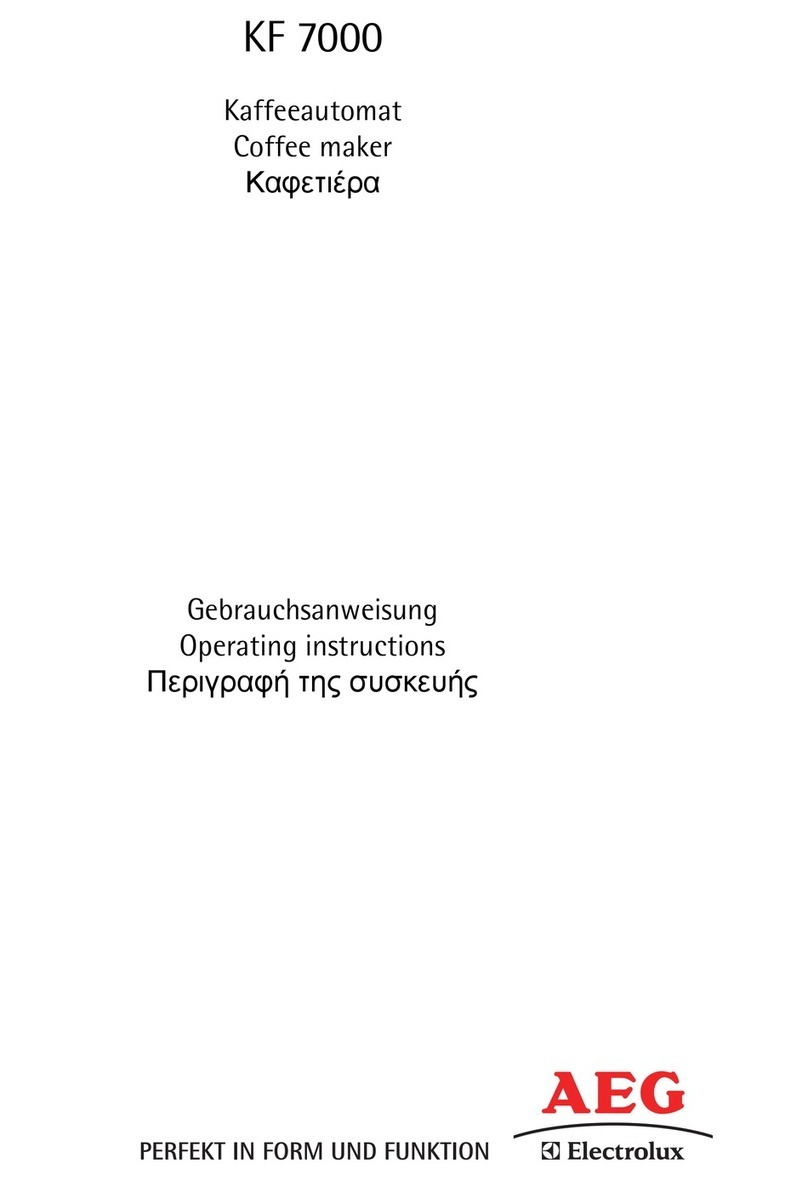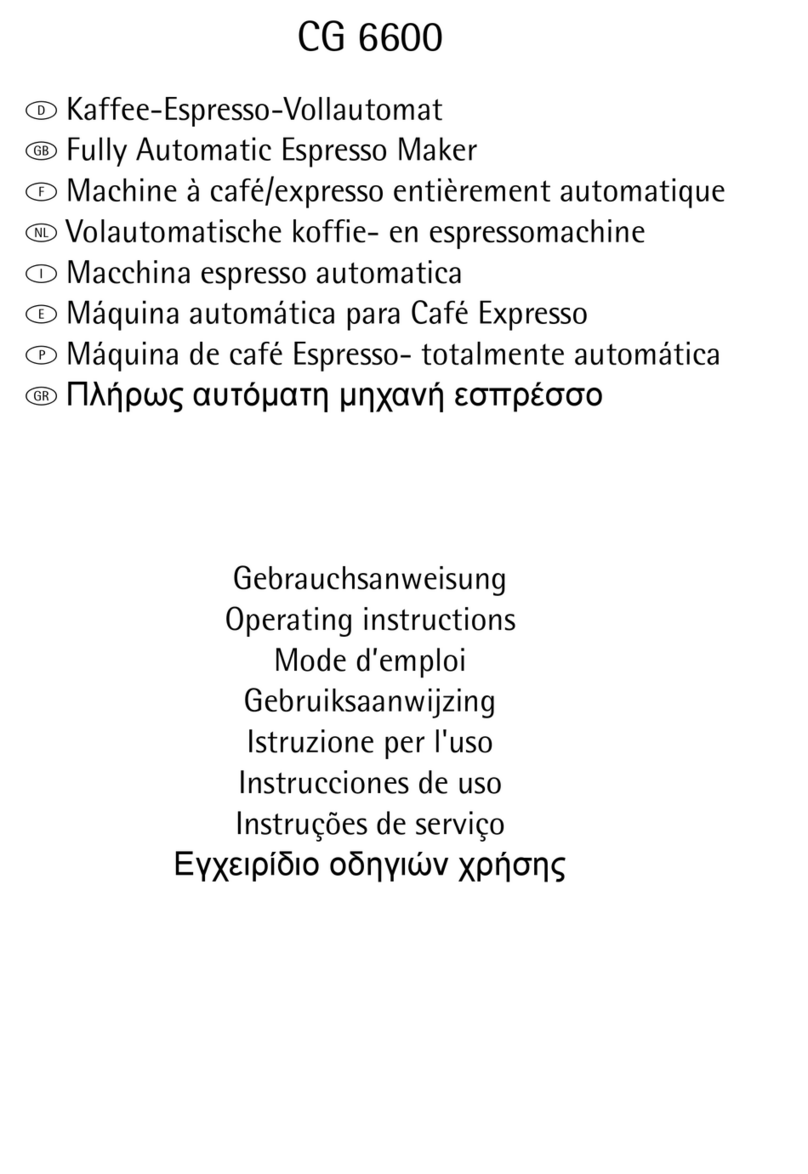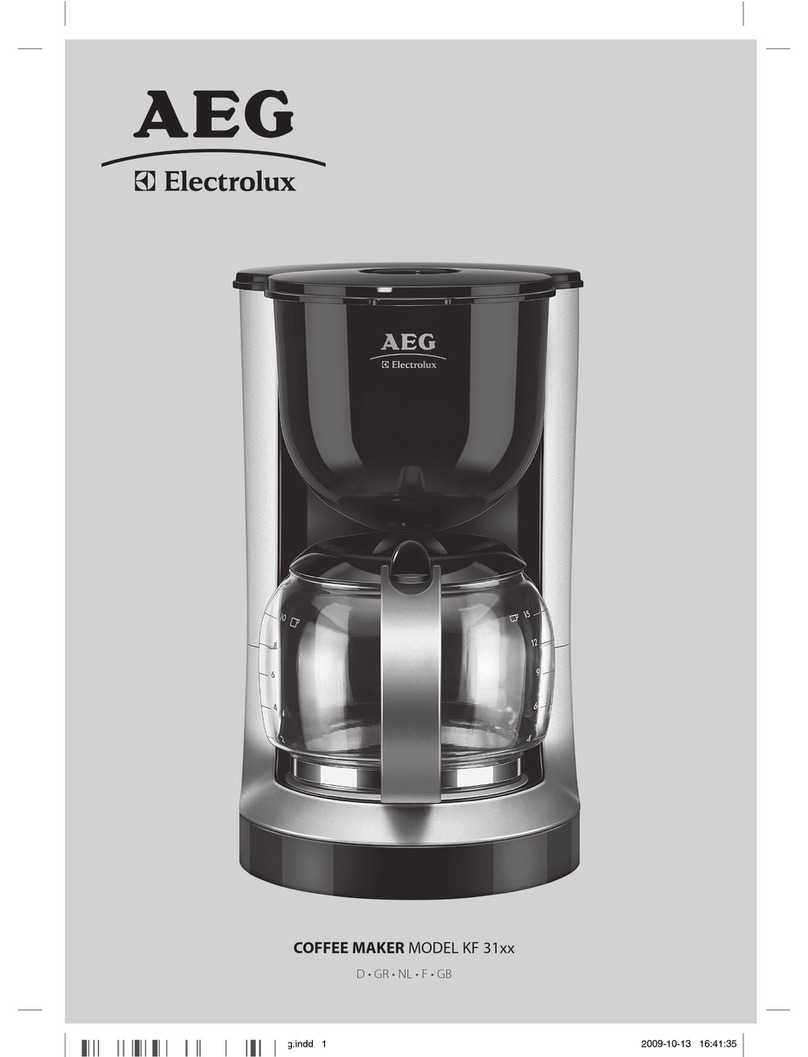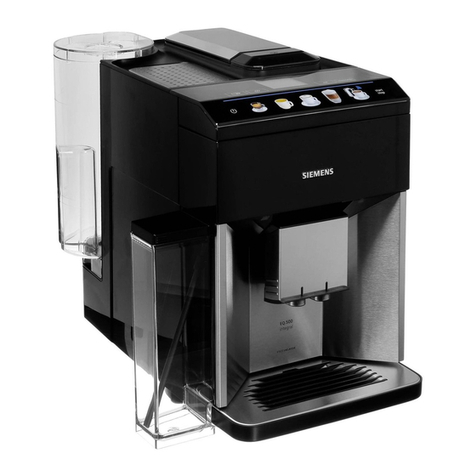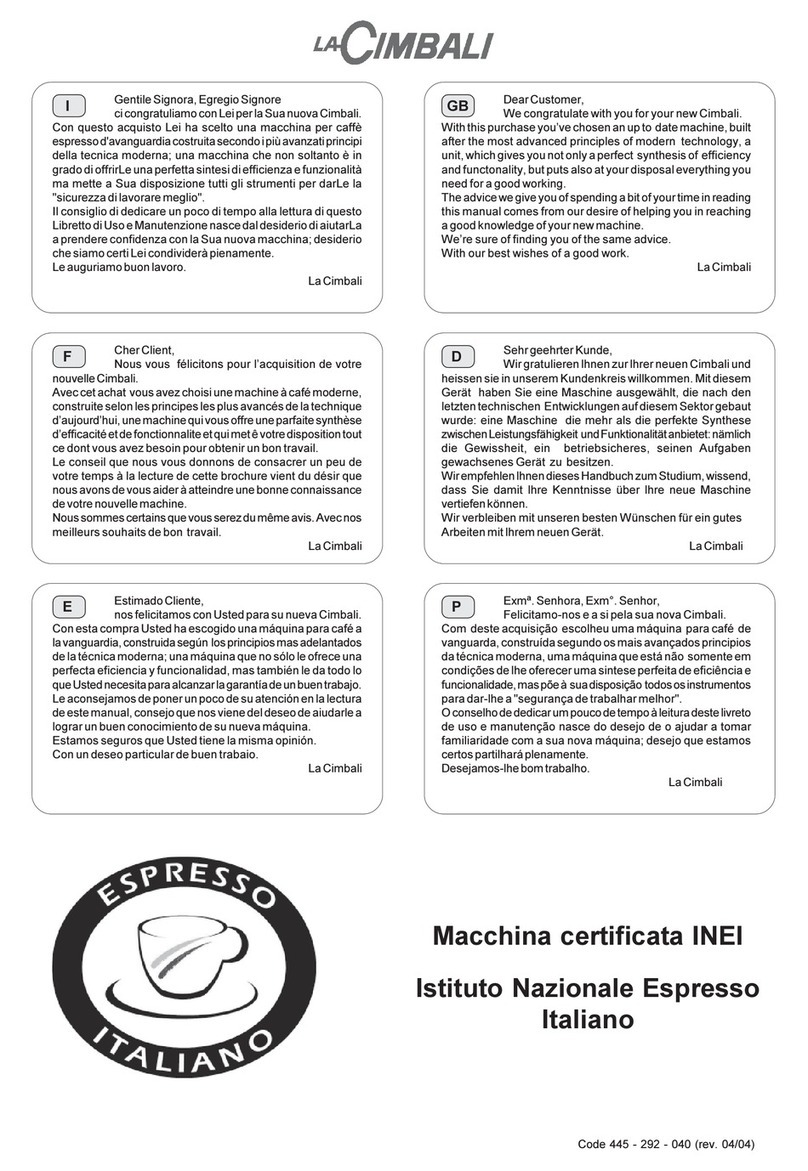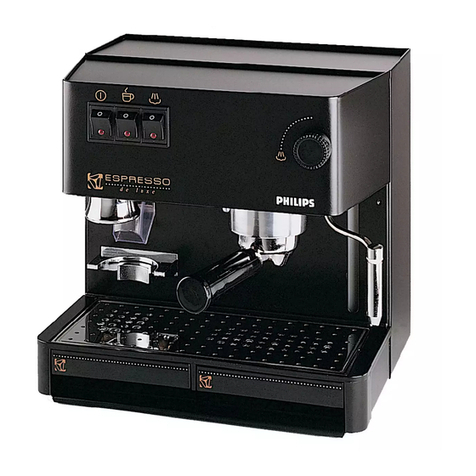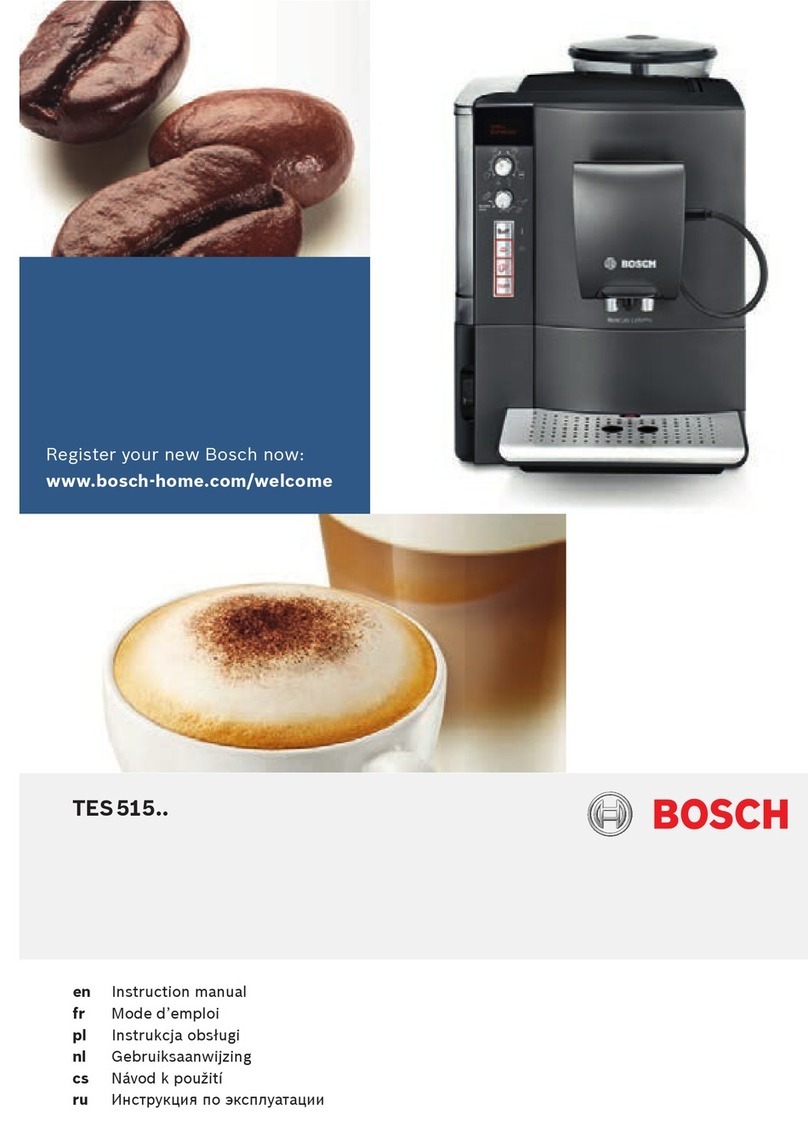g
23
Store your cups upside down on the
cup rack (Figure 1/C). Steam escapes
through the openings in the cup rack,
this warms the cups!
The outlet (Figure 1/G) can be
adjusted in height and can thus be
adjusted to suit different sizes of cup.
To adjust the height, use the thumb
and index finger to grip the ribbing on
the side of the outlet and move it up or
down (Figure 9/A). Important: There is
a risk of burns!
3.1. Adjusting the Amount of
Water (Figure 9/B)
Using the selector dial (Figure 2/P),
adjust the amount of water per cup.
Depending on your taste, select a
“small“ espresso (turn selector dial
anticlockwise) or a large “frothy“ cof-
fee (turn selector dial clockwise).
Note: You can also change the amount
of water during the brewing process.
To adjust the required quantity during
the brewing process: turn the selector
dial slowly anticlockwise from the
maximum setting, until coffee ceases
to run out at the required quantity.
When two cups of coffee are drawn,
the amount of water is more or less
doubled.
Note: While the appliance is heating
up, the “1 Normal Cup“ indicator
(Figure 2/D) flashes.
3.2. One Cup of Normal Coffee
from Beans (Figure 10)
The appliance is ready for use when
the “1 Normal Cup“ indicator (Fig-
ure 2/D) illuminates. Place an empty
cup centrally under the spouts. By
briefly pressing the “1 Cup“ but-
ton (Figure 2/E), you will obtain one
cup of normal coffee. “1 Normal Cup“
flashes.
3.3. One Cup of Strong Coffee
from Beans (Figure 11/A)
The appliance is ready for use when
the “1 Normal Cup“ indicator (Fig-
ure 2/D) illuminates. Place an empty
cup centrally under the spouts. Now
press the “1 Cup“ button (Figure
2/E) until the “1 Strong Cup“ indi-
cator (Figure 2/C) illuminates and “1
Normal Cup“ flashes. You will then
obtain one cup of strong coffee.
3.4. One Cup of Extra Strong
Coffee from Beans (Figure 11/B)
The appliance is ready for use when the
“1 Normal Cup“ indicator (Figure 2/D)
illuminates. Place an empty cup cen-
trally under the spouts. Now press the
“1 Cup“ button (Figure 2/E) until the “1
Normal Cup“ and “1 Strong Cup“ indi-
cators flash. You will then obtain one
cup of extra strong coffee.
3.5. Two Cups of Normal Coffee
from Beans (Figure 12)
The appliance is ready for use when
the “1 Cup“ indicator (Figure 2/D)
illuminates. Place a cup under each of
the spouts.
Note: The correct position for the cups
is given by the two holes in the drip
grille (Figure 1/J) as these are directly
below the spouts.
By pressing the “2 Cups“ button
(Figure 2/F), you will obtain two cups
of normal coffee. “1 Normal Cup“
flashes.
3.6. One or Two Cups of Coffee
from Ground Coffee (Figure 13, 14)
Using this function you can, e.g., brew
decaffeinated coffee.
Caution: Please do not use ground
coffee that is too fine, as this could
block the brewing unit.
The appliance is ready for use when
the “1 Normal Cup“ indicator
(Figure 2/D) illuminates.
0Place one or two cups under the
spouts.
0Press the “Ground Coffee“ button
(Figure 2/H) until the “Ground Cof-
fee“ indicator (Figure 2/G) illuminates
(Figure 13).
0Open the lid (Figure 1/B) and place the
required amount of ground coffee for






